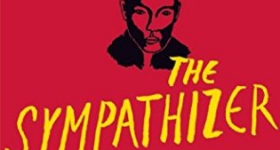Book Review of Bright Lines by Tanwi Nandini Islam
Changing course with the guidance of Bright Lines
“Swadhin, or salvation, comes from changing course altogether.”
Hyphen’s former music editor Tanwi Nandini Islam’s debut novel Bright Lines exudes and explores intimacy in profoundly diverse ways. From living with the Saleems (Anwar, Hashi, Charu and Ella) in their house, bedrooms, and independently-owned businesses, to exploring their Brooklyn and Bangladesh, readers will palpably know what it is like to live in their worlds. The sinewy paths these characters take throughout Bright Lines towards self-awareness and self-acceptance reveals their strengths and fragility, their ambitions and their fears. Quickly, you find yourself relating to each of them deeply with all of your senses alerted as Anwar and Ella work in their garden, while Hashi or Charu are cooking, or when Anwar enters his apothecary. Islam’s writing is strikingly personal; she pulls the reader in with the familiarity of human complexity, yet layers our relationship to the Saleems with insights into their struggles relating to America and being American.
Bright Lines follows Anwar Saleem -- husband, father, uncle, apothecary shop owner, lover of marijuana -- as he navigates through his relationships with the many women in his life. His wife, Hashi, who owns a beauty salon, is a voracious symbol of female strength in the novel. Their daughter Charu when we first meet her is a teenager strong aspirations to be a fashion designer and lives in a bedroom filled with fabrics and colorful clothes. She is a young woman with an active social life and high energy. Charu’s cousin Ella -- Anwar and Hashi’s niece -- is a college student spending the summer with the family in their home in Brooklyn. She is quiet, a bit on the lanky side, and compliments Charu’s high energy with her subtle, calm nature:
As they grew up, Ella loved everything about Charu, even her contradictions: The same girl who despised capitalist materialism owned enough fine threads to open a used-clothing store; the same girl who scoffed at other girls for idiotic flirting was a clever coquette. She demanded an end to anorexic beauty ideals, but lamented her “third world body”: protruding belly, scrawny arms and legs. … Charu aligned herself with outsiders, with fringe dwellers. She accepted the weird, the freakish, the perverse, the gothic, and the queer. She loved people different from her; Ella was a perfect complement. As Charu grew curvy, Ella’s muscles became long and limber. Ella refused the pains of contacts and was damned to thick glasses with plastic frames.
Charu and Ella are close but they live very different lives. Ella takes on a big sister role towards Charu, who sneaks out to parties at night and sneaks in her lover Malik. We learn early on that Ella has hallucinations – formed by bright lines -- and has been seeing them since she was a child in Bangladesh. Ella often sleeps in the garden at night and can see beautiful shapes swarming around her. This becomes a desired experience for a friend of Charu’s, Maya, as she and Ella become close and form their own intimate relationship.
Bright Lines is full of intertwining, friendly, vengeful, romantic and sexual relationships. As these relationships become more revealed throughout the novel, we learn that each character seems to undergo powerful sexual awakenings. Anwar, Charu and Ella experience strong sexual desires for the “forbidden,” which is what makes their complexities so interesting as we get to know them. I say “forbidden” to recognize the many cultural views toward the myriad sexual relationships presented in the novel. But, the most interesting sexual awakening story has to be with Ella. This summer that subtle and calm Ella lives in Brooklyn with her family has her continually pushing her desire for Charu aside, as she begins to see herself as her father while wearing his clothes, his glasses. Ella endures a beautiful yet painful exploration of cultural and sexual identity and Islam is wonderfully successful in writing a character exploring her/his sexual self.
Ella’s hallucinations draws the reader all the way in as Islam describes them like a beautiful dream, a world full of wonder and color, hope and despair. In the second half of the novel, the Saleems visit their families in Bangladesh. While there, Ella is encouraged to see a doctor about her hallucinations, which she does, but while doing so she confronts, or comes to accept, living with these visions, these bright lines:
Through them [hallucinations] she saw colors, people, and patterns beyond the world she lived in. She saw her parents. She saw Maya. The hallucinations were a residue of what she had lost. She’d come to depend on this predictable magic. In this life where she’d have little power over what had happened to her, they were the wild gift that let her survive. And no one could take them from her.
By the end of the novel, I came to believe that Ella’s hallucinations were a vehicle for her to accept her reality. How she handles her hallucinations throughout the novel parallels her understanding of herself -- it’s a sigh of relief, a release of tension. “Swadhin, thought Ella. Ultimate liberation. She repeated the word.”
Tanwi Nandini Islam deserves much praise for her fantastic and wonderfully emotional debut novel. It is a grand feeling to see one of Hyphen’s own share the world of the Saleems through her powerful, humorous and deeply insightful voice.
Andrea Kim Taylor is a museum educator currently living/working in Washington, D.C.









Comments